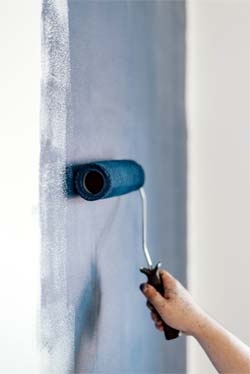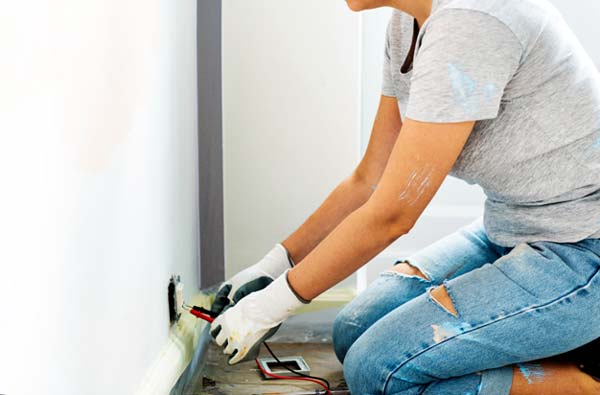
For something that serves such an important role in our homes, drywall is surprisingly delicate. It doesn’t take much for dents, cracks, holes and other problems to appear, and unfortunately, many of the problems with drywall (or sheetrock) are due to avoidable mistakes. By avoiding some of the most common errors we make in our homes will definitely help protect your drywall.
Here are some of the most common mistakes that homeowners make. Don’t be that guy. Just use a little extra caution and some good habits, and you can keep your walls looking great and avoid having to repair or replace the drywall.
Mistake #1: Placing Furniture Too Close to the Wall
When arranging your furniture, it’s tempting to push pieces right up against the wall. However, doing so can cause marks, dents, and even holes in the drywall over time. The most common type of damage from furniture is scuffs or marks on the wall, which can often be removed with soap and water or a Magic Eraser. However, if the drywall has dings, dents, or holes, you’ll need to call on a Tampa sheetrock repair company to fix the damage. Therefore, experts recommend maintaining at least an inch of space or more between your furniture and the walls to avoid this type of damage.
Mistake #2: Not Prepping Before Wallpapering
Wallpaper is making a big comeback in home décor, but if you don’t properly prep your sheetrock before papering your walls, you are going to be in for some headaches when you decide to redecorate down the road. When wallpaper adheres directly to drywall without the correct primer, it’s impossible to remove without causing major damage to the wallboard. Even when using a steamer to loosen the adhesive, you are going to lose chunks of drywall in the process. Therefore, if you plan to use wallpaper, follow the proper steps for prepping the walls and use a good quality primer, which will ensure easy and damage-free removal in the future.
Mistake #3: Not Using Door Stoppers
The most common spot for holes in drywall is behind doors, where the doorknob hits the wall – over and over again. The solution is simple: Add a door stop behind the door (you know, those springy things that cats and babies love to play with) or an adhesive backing plate that will protect6 o the drywall from damage. There is no reason to ever have doorknob sized holes in your walls.
Mistake #4: Poorly Repaired Popped Nails
Every so often, you’ll notice a random nail has popped out of the wall. Over time as your home settles, drywall nails or screws can pop out of the wall in weird places. This happens when the fasteners aren’t securely screwed or nailed into the studs.
When it happens, resist the temptation to just pound the nail back into place. Not only can you possibly cause more damage this way, but it’s likely that it’s just going to pop right back out. Instead, remove the nail and replace it securely into a stud (use a stud finder to be sure). You will likely have to fill the hole and touch up the paint, but it’s easier than repairing a larger hole caused by your hammer.
Mistake #5: Incorrect Repairs

Repairing small areas of drywall is a relatively easy process – if you know what you’re doing. Unfortunately, many homeowners think they know what they are doing, and end up making problems worse with incorrect repairs. It’s easy, for example, to over sand the repair after taping and mudding, which will lead to peeling and other problems in the future. For that reason, if the area that needs to be repaired is larger than a few square feet, or you really have no idea what you’re doing, it’s best to call in a professional.
Mistake #6: Not Dealing with Water Damage
It’s too late to protect your drywall if the damage has already happened. Water is enemy number one for drywall. You need to deal with water problems quickly or the damage can be substantial. If your walls get wet, drying them quickly can prevent damage. Then clean up any excess water and use fans to further dry them.
If your walls have stains, crumble to the touch, feel damp, or are peeling, you likely have a water problem, and you’ll probably need to replace the drywall. Before doing so, be sure to take care of the water problem first to keep it from happening again.
Protecting your walls isn’t difficult, but does require a bit of diligence. When you avoid these mistakes, you’ll avoid problems, and ultimately, some big expenses.



